| |
For thousands of
years, people
all over the
world have
believed in the
influence of the
planets on human
life and
history.
Logically
speaking, the
creation of the
planets
precedes that of
the living
beings. Hence,
some sort of
cause and effect
relation must
subsist between
these two. This
seems to be the
basis for this
belief.
The Navagrahas
or the nine
planets are
regarded by the
Hindus as of the
greatest
astrological
significance and
are believed to
influence the
life of the
individual as
also the course
of history.
As per the
traditional
list, the nine
planets are Ravi
or Sarya (sun),
Soma or Candra
(moon), Mangala,
Kuja or Angaraka
(Mars), Budha
(Mercury),
Brhaspati or
Guru (Jupiter),
Sukra (Venus),
Sani (Saturn),
Rahu and Ketu.
The seven days
of the week have
derived their
names from the
first seven
planets. Rahu
and Ketu are not
planets but
ascending and
descending nodes
of the moon.
Sometimes Ketu
is depicted as
the
personification
of comets and
meteors.
Sani, Rahu and
Ketu are
considered
inauspicious,
even positively
maleficent, and
responsible for
children's
diseases. Hence
they need to be
propitiated.
|
| |
| Surya |
|
Soma
(Chandra) |
|
Mangala (Angaraka,
Kuja) |
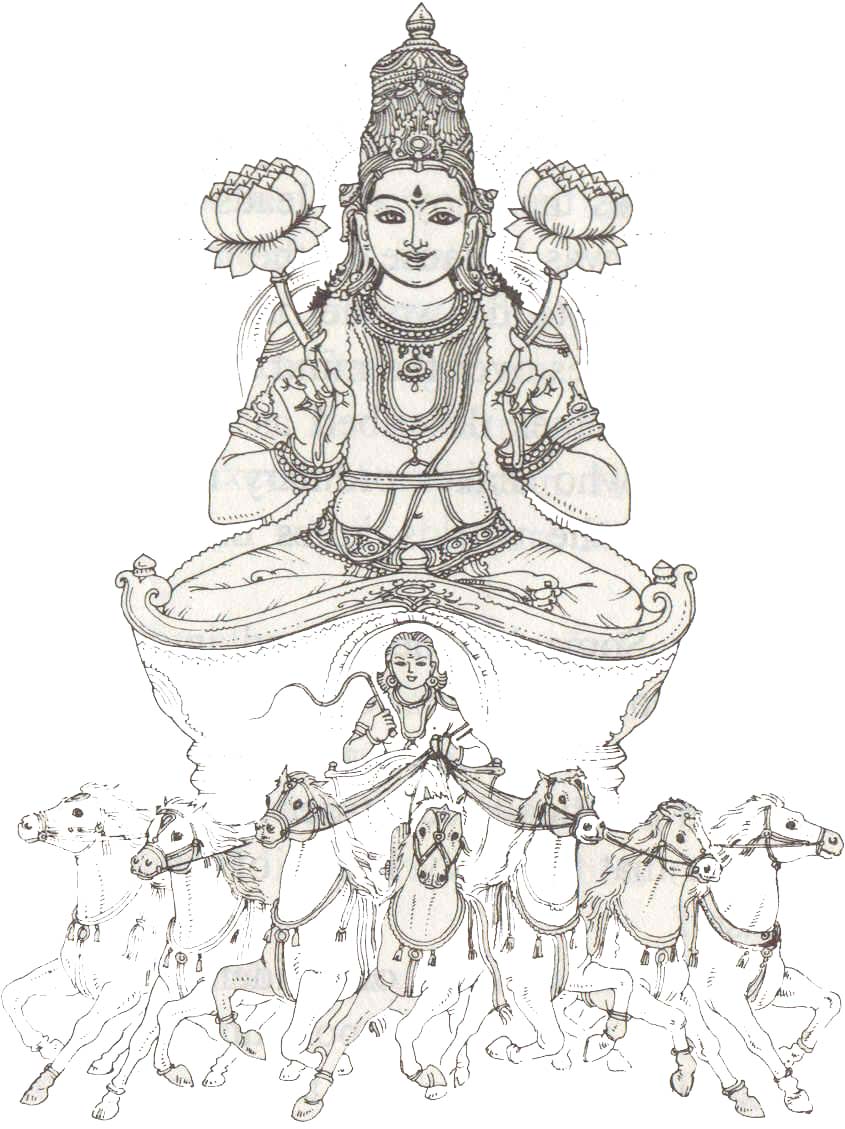 |
|
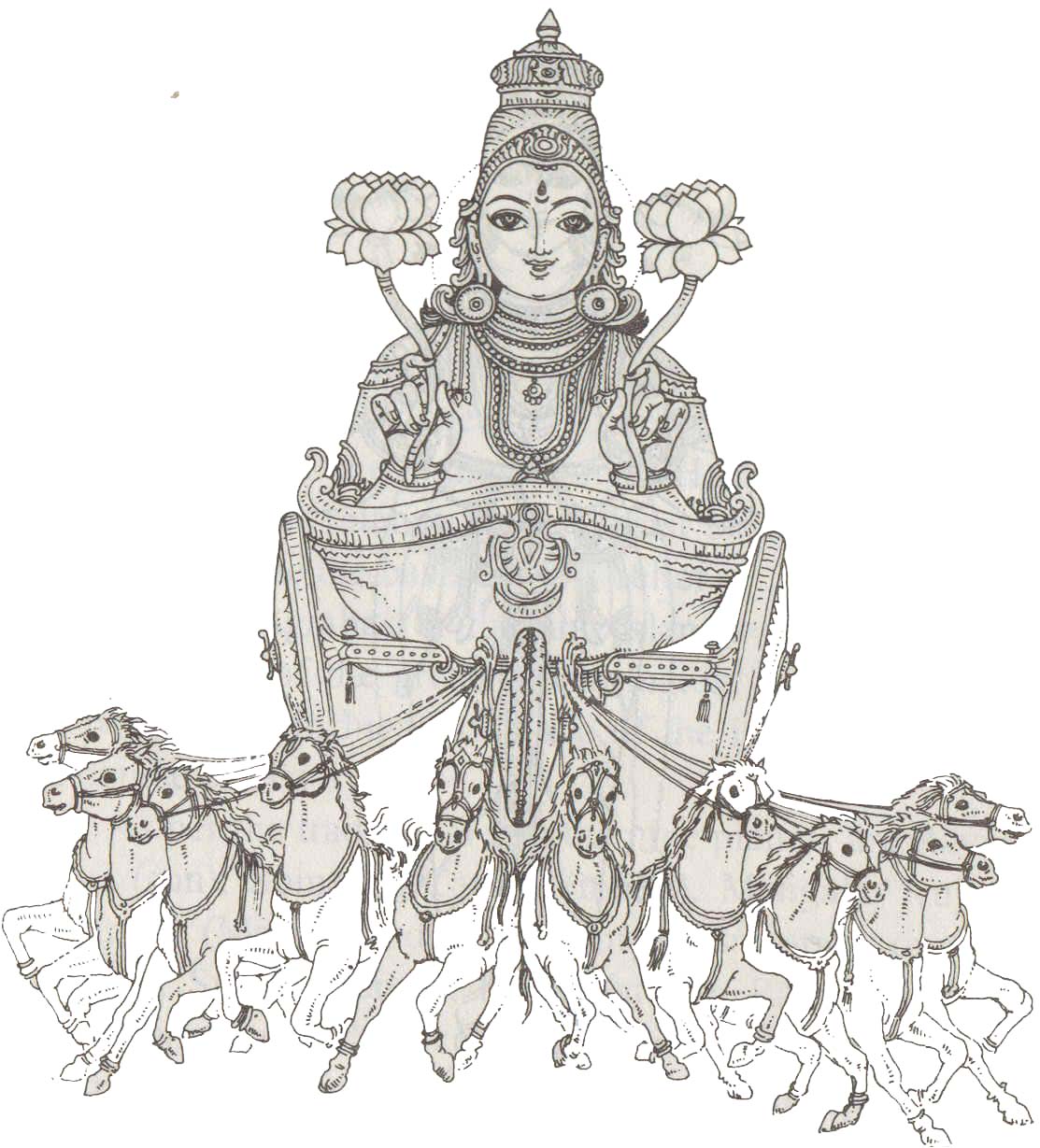 |
|
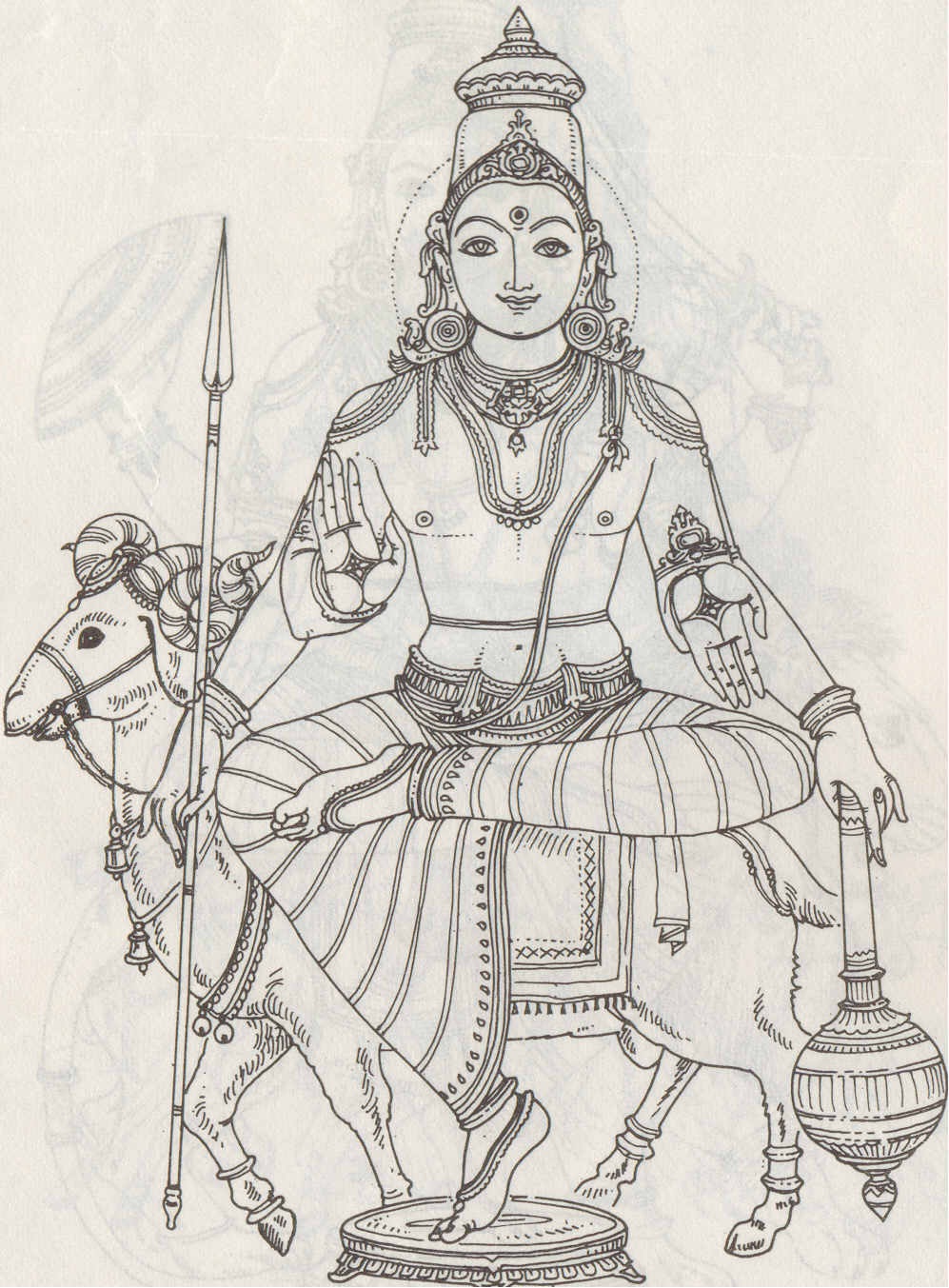 |
The imag~ of
Surya must
always be placed
in the
centre of the
planets, facing
east, with the
other Grahas
. fixed round
him, each in a
specified
dir~ction. He
has two hands,
holding a lotus
in each. His
chariot has one
wheel, is drawn
by seven horses
and has Arul?a
(deity of the
dawn) as the
charioteer. |
|
Soma or
Candra has only
a face and two
hands but no
body. He is
shown holding
white lotuses in
his two hands.
He rides on a
two or three
wheeled chariot
drawn by ten
horses. |
|
Mary gala or
Kuja has four
hands, carrying
the weapons mace
and javelin in
two, showing the
Varada and
Abhaya Mudras
with the other
two. He rides on
a ram. |
| |
|
|
|
|
| Budha |
|
Guru (Bruhaspati) |
|
Shukra |
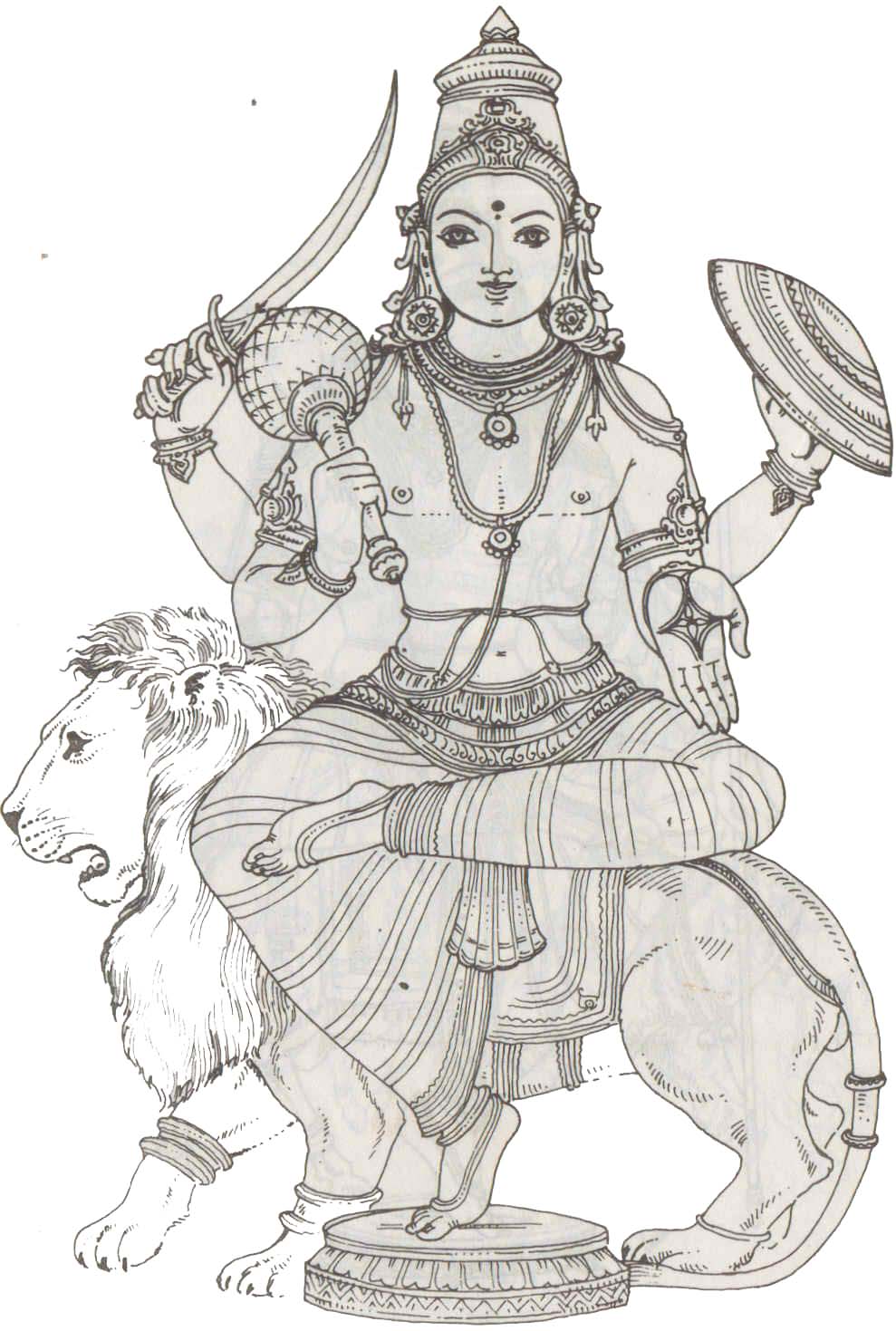 |
|
 |
|
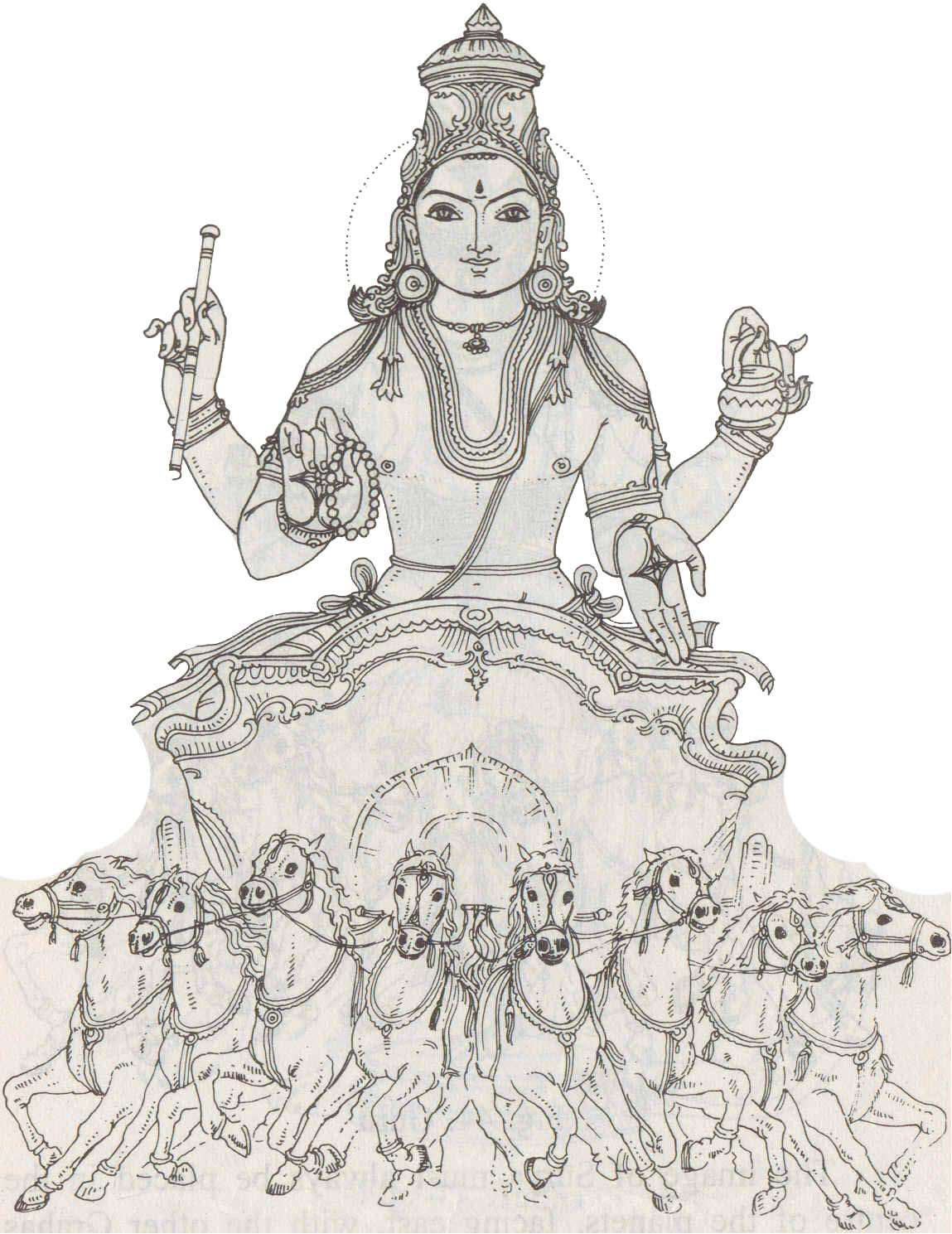 |
| Budha also
has four hands,
three of them
wielding the
weapons sword,
shield and mace.
The last hand
shows the
Varadamudra. He
rides on a lion
or a chariot
drawn by four
horses. |
|
Brhaspati,
being the Guru,
is shown holding
a book and a
rosary in his
two hands. His
chariot is
golden and is
driven by eight
horses. |
|
Sukra is
also seated in a
golden chariot
drawn by eight
horses or in a
silver one drawn
by ten horses.
He has two hands
holding a Nidhi
(=treasure) and
a book.
Some?times he is
shown with four
hands holding
the staff,
rosary and
waterpot, the
fourth
exhibiting the
Varadamudra. |
| |
|
|
|
|
| Shani |
|
Rahu |
|
Ketu |
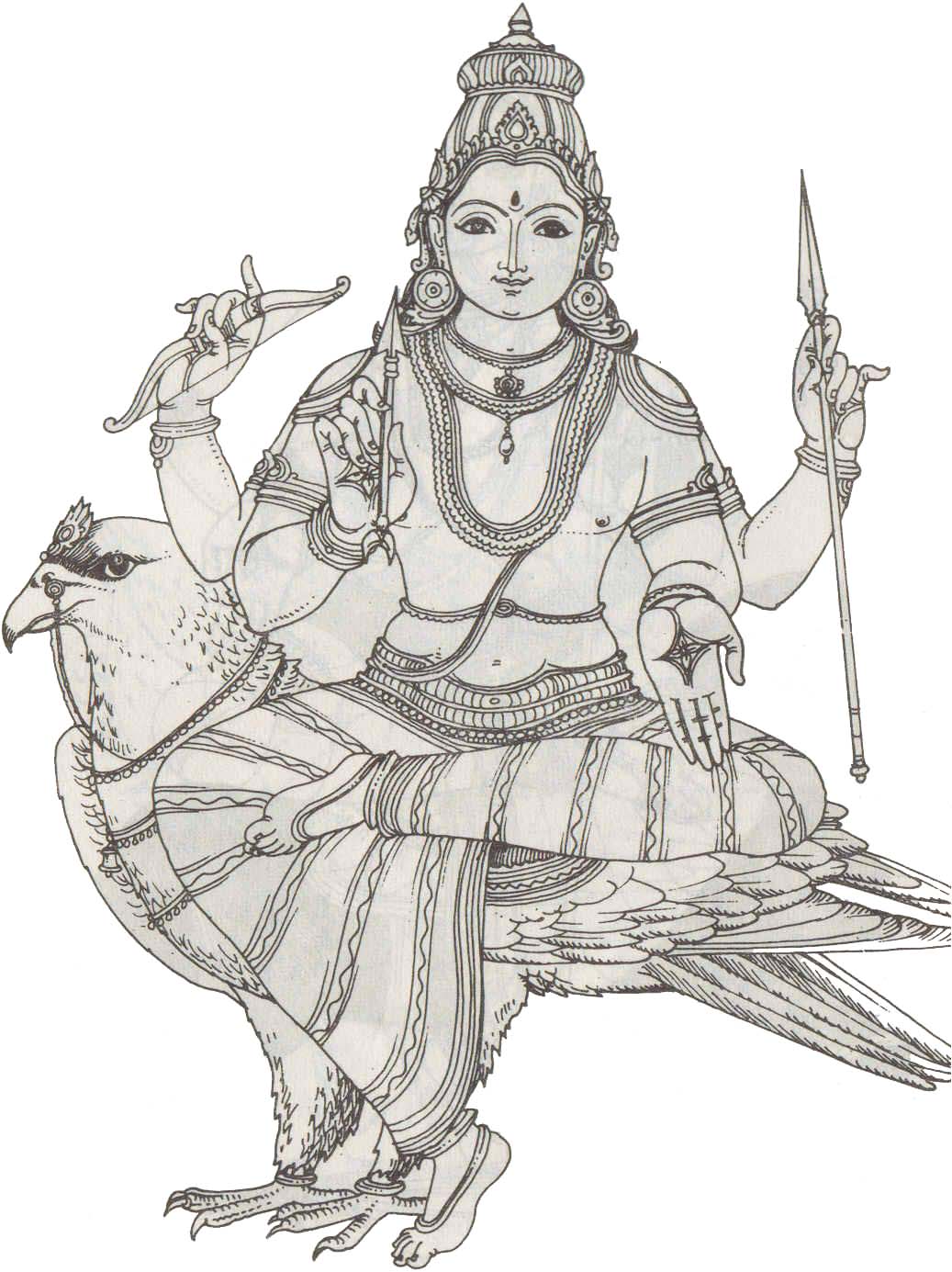 |
|
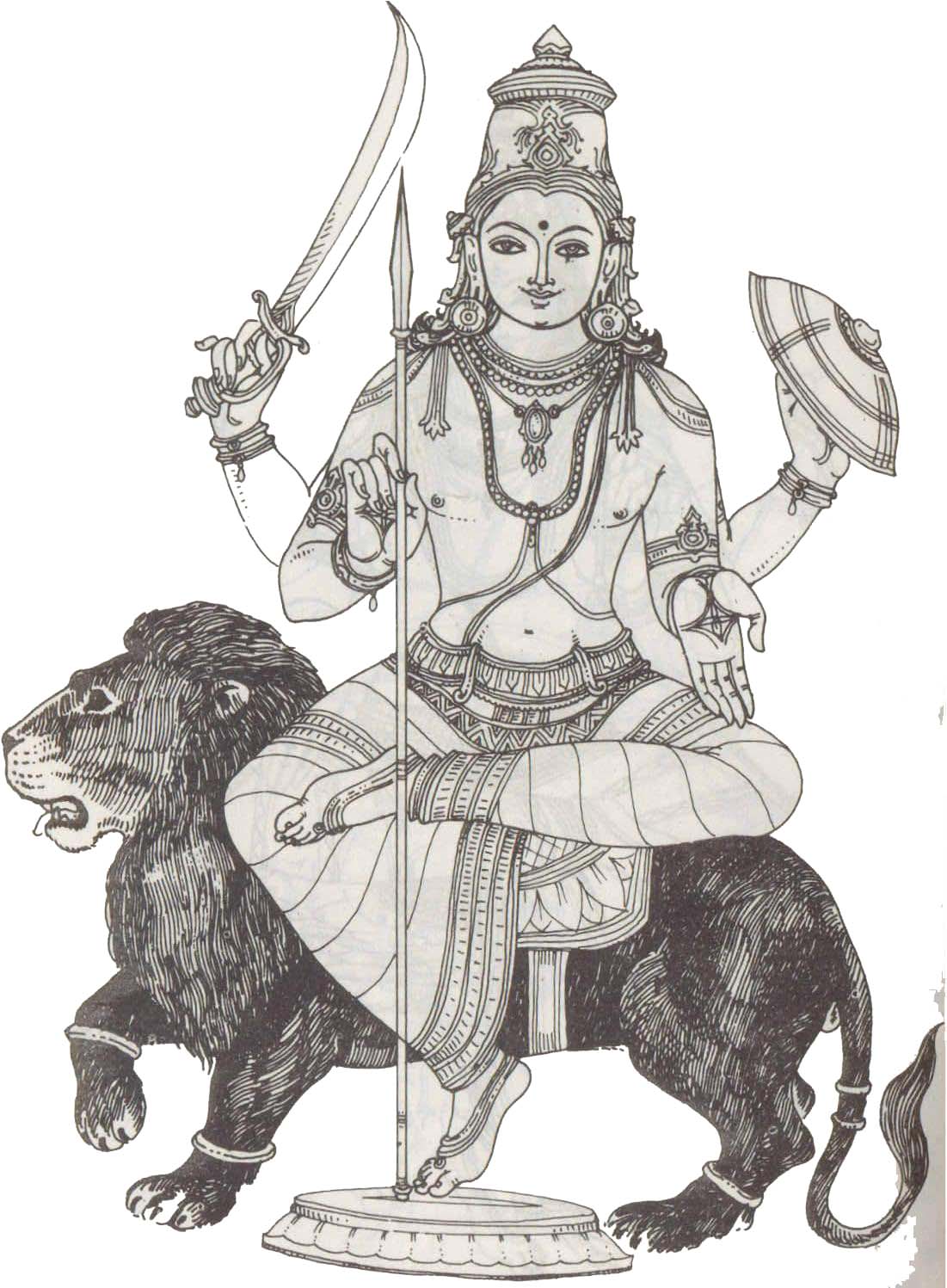 |
|
 |
| Sani rides
in an iron
chariot drawn by
eight horses. He
is more often
shown as ridIng
on a vulture. A
buffalo also may
be his mount. He
holds the arrow,
bow and javelin
in three of his
hands, the last
hand being in
the Varada Mudra. |
|
Rahu is
usually
described as
having only a
face and Ketu is
depicted like a
serpent's tail.
Iconographical
works, however,
describe them
differently.
Rahu may be
shown riding a
black lion or as
seated on a
Sirhhasana
(throne) or in a
silver chariot
drawn by eight
horses. He may
have two hands,
the right hand
carrying a
woollen blanket
and a book, the
left hand being
shown empty. If
four hands are
shown, they can
carry sword,
shield and
lance, the
fourth one being
in Varada-mudra.
|
|
Ketu has an
ugly face and
rides on a
vulture. In his
two arms he
exhibits a mace
and the
Varadamudra or
Abhayamudra. |
| |
|
|
|
|
| |
|
|
|
|
|
|

